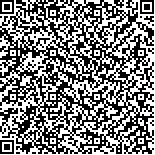侯梅,于荣,赵荣安,李淑秋,郭洪磊.脑瘫儿童的语言特征初探[J].中华物理医学与康复杂志,2003,(4):.-
扫码阅读全文

|
| 脑瘫儿童的语言特征初探 |
|
| |
| DOI: |
| 中文关键词: 脑性瘫痪 语言-言语 构音 |
| 英文关键词: Cerebral palsy Language and speech Children |
| 基金项目: |
|
| 摘要点击次数: 2678 |
| 全文下载次数: 2089 |
| 中文摘要: |
| 目的探讨各类型脑瘫儿童语言发育与构音的特点。 方法采用中国康复研究中心制定的S-S语言发育迟缓检查法和构音障碍检查法,对76例不同类型脑瘫儿童进行语言发育和构音能力的全面评定,并进行对比分析。 结果语言障碍见于73.1%的患儿。痉挛型双瘫患儿语言听理解与口语表达一致,语言发育迟缓和运动性构音障碍发生率分别为45.95%和48.65%,且二者常并存。痉挛型四肢瘫和徐动型脑瘫患儿听理解与口语表达发育分离,理解明显好于表达,语言发育迟缓发生率分别为90%和64.7%。徐动型、共济失调型和痉挛型四肢瘫构音障碍突出,见于所有患儿。偏瘫患儿较少发生语言问题。 结论语言障碍是脑瘫的主要临床表现之一,不同脑瘫类型的语言表现各有特征性,康复时应对患儿进行认真的语言-言语评定。 |
| 英文摘要: |
| Objective To characterize the language development and articulation in children with different types of cerebral palsy. MethodsThe data from 76 children with cerebral palsy who underwent standardized tests of speech and language were analyzed. The incidence and abnormal pattern were compared between groups. ResultsLanguage delay and/or dysarthria were noted in 73.1% of these subjects. Children with diplegia developed similar levels both in comprehension and verbal expression, whereas those with tetraplegia and athetoid developed poorer verbal expression. The incidence of language delay in children with diplegia, tetraplegia and athetoid were 45.95%, 90% and 64.7%, respectively. Dysarthria was found in all the children with tetraplegia, athetoid and ataxia, but only 48.65% of those with diplegia. ConclusionLanguage disorders were common in children with cerebral palsy, especially those with athetoid and tetraplegia. |
|
查看全文
查看/发表评论 下载PDF阅读器 |
| 关闭 |
|
|
|